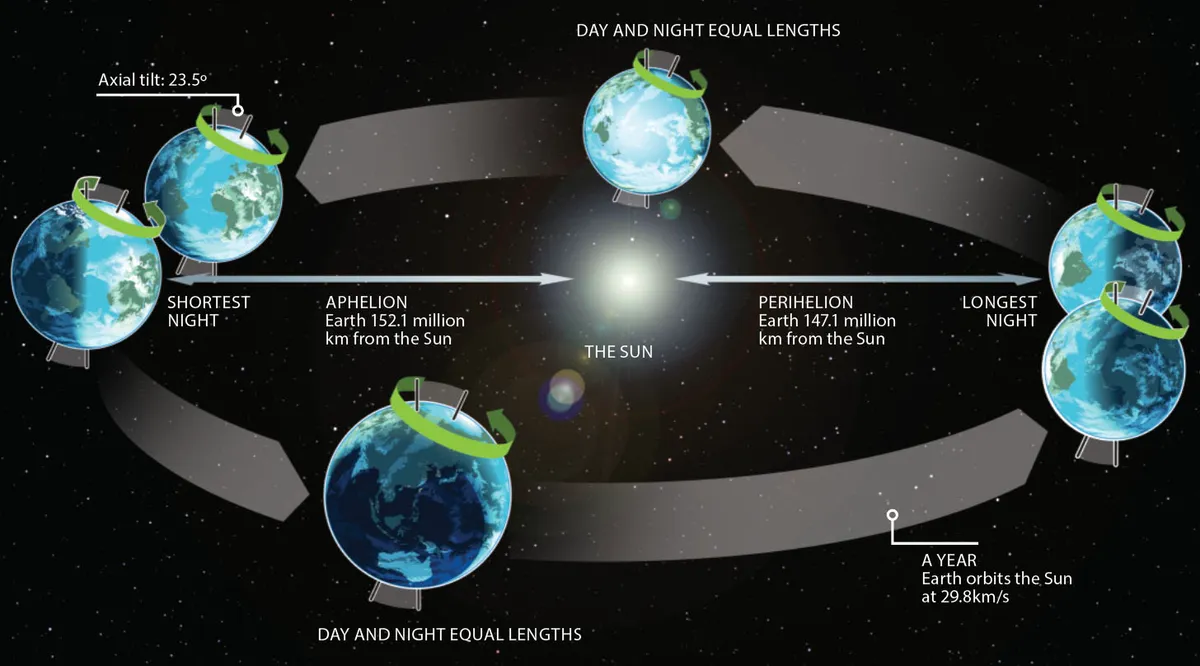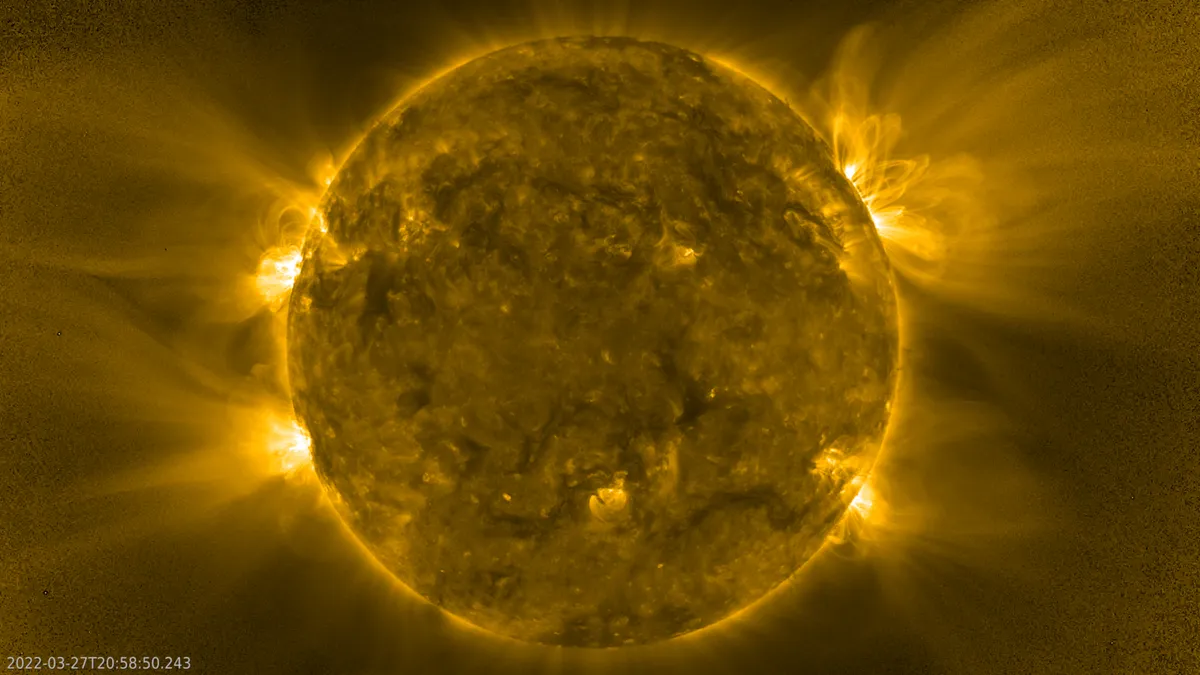Depending on your preferred method of transport, it would take you 19 years to reach the Sun on a plane travelling at 885 km/h (550 mph) or 177 years to drive at 96 km/h (60 mph) or 3,536 years to walk there at 4.8 km/h (3 mph).
A photon of light makes the journey from the Sun to Earth in just 8 minutes and 20 seconds.
Earth orbits the Sun at an average distance of 150 million km (93 million miles), which we call 1 Astronomical Unit.
Find out how long it takes to walk round the Moon and how long to travel around the world.

At perihelion Earth is 147 million km (91.4 million miles) from the Sun, and at aphelion it is 151 million km (94 million miles) away.
Spacecraft use gravity assists from Venus to reach the Sun and repeat the process to achieve closer passes of the Sun's surface.
ESA's Solar Orbiter, launched on 10 February 2020, came within 77 million km (48 million miles) by June of that year.

NASA's Parker Solar Probe, launched on 12 August 2018, is the fastest object ever built.
Using the first of what will end up being 7 flybys of Venus, it reached the Sun less than 3 months later on November 6.
At its closest approach, Parker Solar Probe will be just 6 million km (3.8 million miles) from the Sun's surface, 7 times closer than any previous mission, and reach speeds of 690,000 km/h (430,000 mph)
The spacecraft will endure temperatures of 1,370 degrees Celsius (1643 Kelvin).
Due to the 11.4 cm (4.5 inch) heat shield, which weighs just 73 kg (160 lbs), the instruments inside will remain around 29 degrees C.

